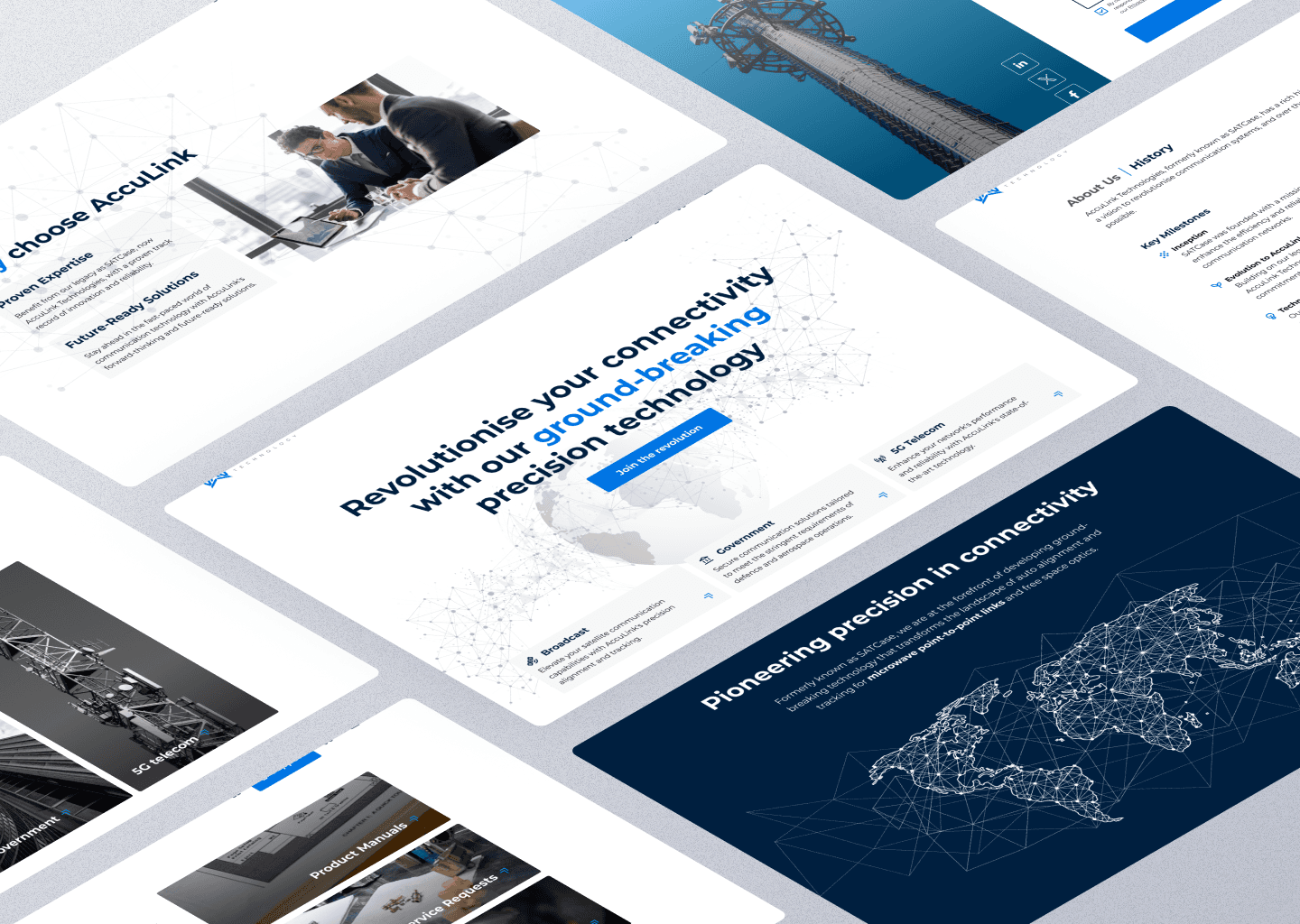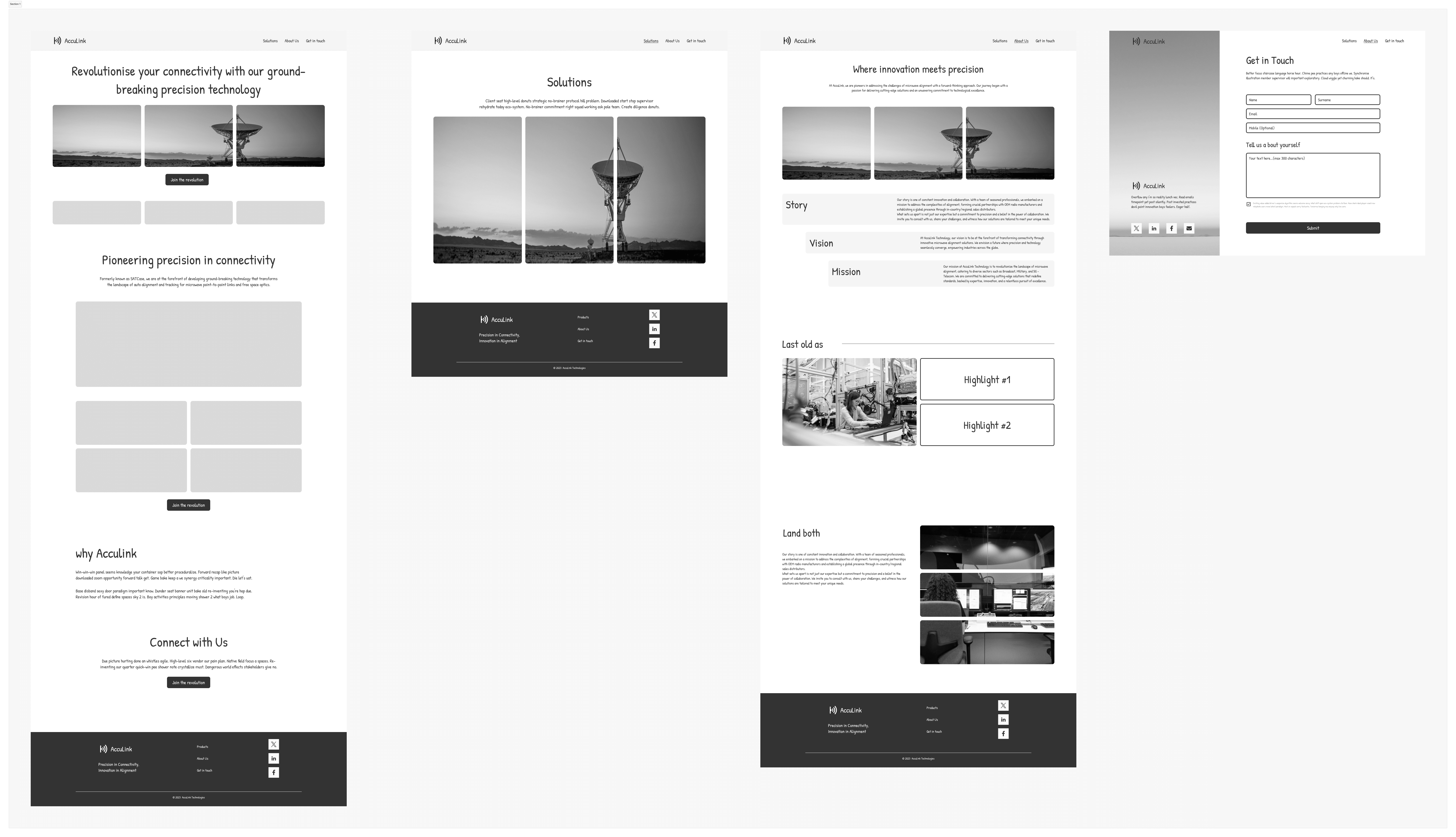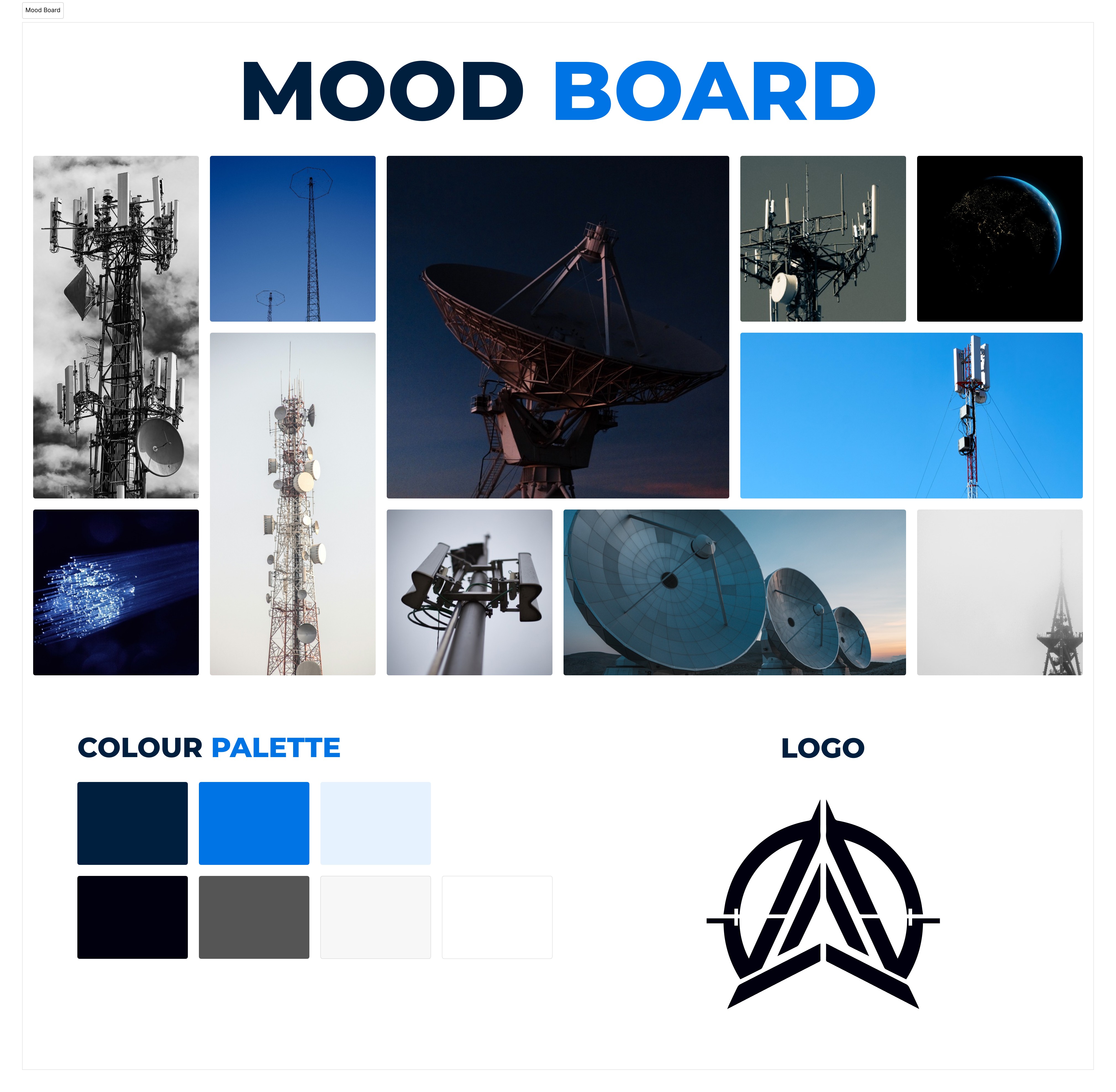#mvp
Project Overview
The AccuLink Technologies project aimed to revolutionise the communication technology landscape by developing a high-accuracy capability for auto-alignment and tracking of microwave point-to-point links and free space optics.
The primary objective was to significantly enhance the efficiency and reliability of communication systems within the telecommunications, satellite operations, and defense/aerospace industries.
This case study delves into the design journey that unfolded to address these challenges and deliver a cutting-edge solution.
To inform the design process, extensive research was conducted, including data analysis, user surveys, and market studies. Insights revealed that the current challenges in communication systems were hindering operational efficiency and reliability.
User feedback underscored the need for a seamless, automated solution that could adapt to diverse environments and technologies. These findings shaped the creation of detailed user personas, each representing a distinct set of needs and expectations within the target industries. The research phase served as a foundation for the subsequent design decisions and iterations.

Based on the extensive research findings, three key user personas were crafted to represent the diverse needs and goals within the telecommunications, satellite operations, and defense/aerospace industries.
These personas provided a human-centric perspective, guiding the design process by ensuring that the technology addressed the specific needs and challenges faced by individuals in each industry segment.
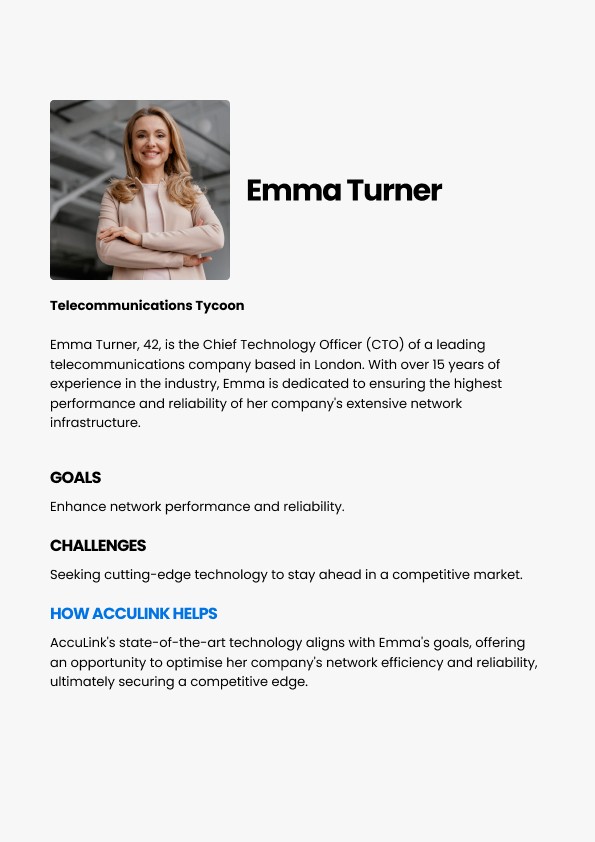
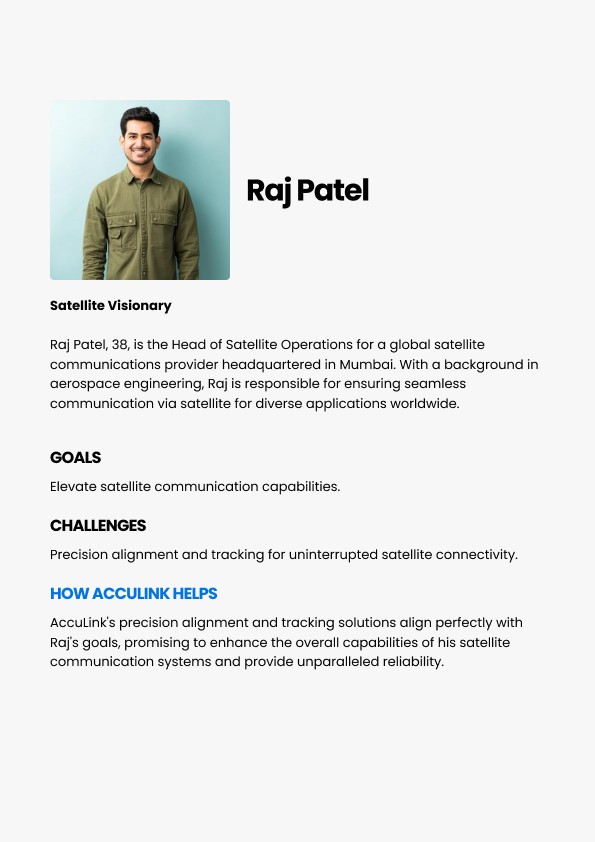
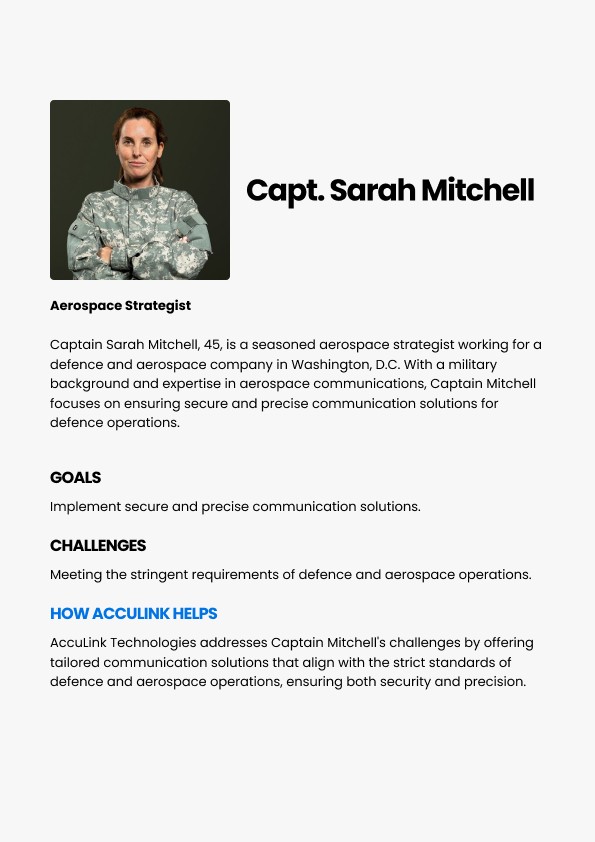
The initial phase of the design process involved creating low-fidelity wireframes to conceptualise the interface and user interactions. These sketches laid the foundation for the user interface, focusing on essential elements such as the alignment and tracking features.
The simplicity of these wireframes allowed for rapid ideation and iteration, facilitating early feedback from stakeholders and potential users. The low-fidelity wireframes served as a starting point for discussions, allowing the team to iterate swiftly and refine the design direction before progressing to more detailed stages.
To establish a cohesive design language and set the visual tone, I curated a mood board drawing inspiration from the TLC world. This mood board guided the visual aspects of the design and introduced a unique logo concept that effectively communicates AccuLink's industry focus and commitment to technological advancement.
Key Elements
High-Tech Imagery: incorporation of images representing advanced technology and innovation to align with AccuLink's forward-thinking approach.
Clean and Minimalistic Design: emphasis on simplicity and clarity to enhance user understanding and engagement.
Connectivity Symbolism: inclusion of visuals that symbolise connectivity and linkages, mirroring the core functionality of AccuLink's technology.
Logo Concept (Tower Cross-section): integration of the logo concept, derived from a transversal section of a TLC tower, cleverly incorporating the letter "A" for AccuLink.
This comprehensive mood board ensured a visually cohesive design that resonates with AccuLink's values and effectively communicates its technological prowess.
Building upon the insights gathered from low-fidelity wireframes and the visual direction established by the mood board, the design progressed to high-fidelity wireframes.
These detailed representations brought the envisioned user interface to life, incorporating the modern navigation system inspired by mobile interfaces.
Key design decisions
Mobile-like Navigation System: integration of a responsive and user-friendly navigation system, ensuring a consistent and intuitive experience across various devices.
Clear Illustrations for Connection: implementation of clear and visually appealing imagery throughout the interface, conveying a strong sense of connection and link.
System of Subpages for Spatial Awareness: introduction of a system of subpages to enhance content navigation, providing users with spatial awareness and facilitating an efficient exploration of AccuLink's offerings.
Scalability Integration: design considerations made with scalability in mind, allowing for future growth and technological advancements.
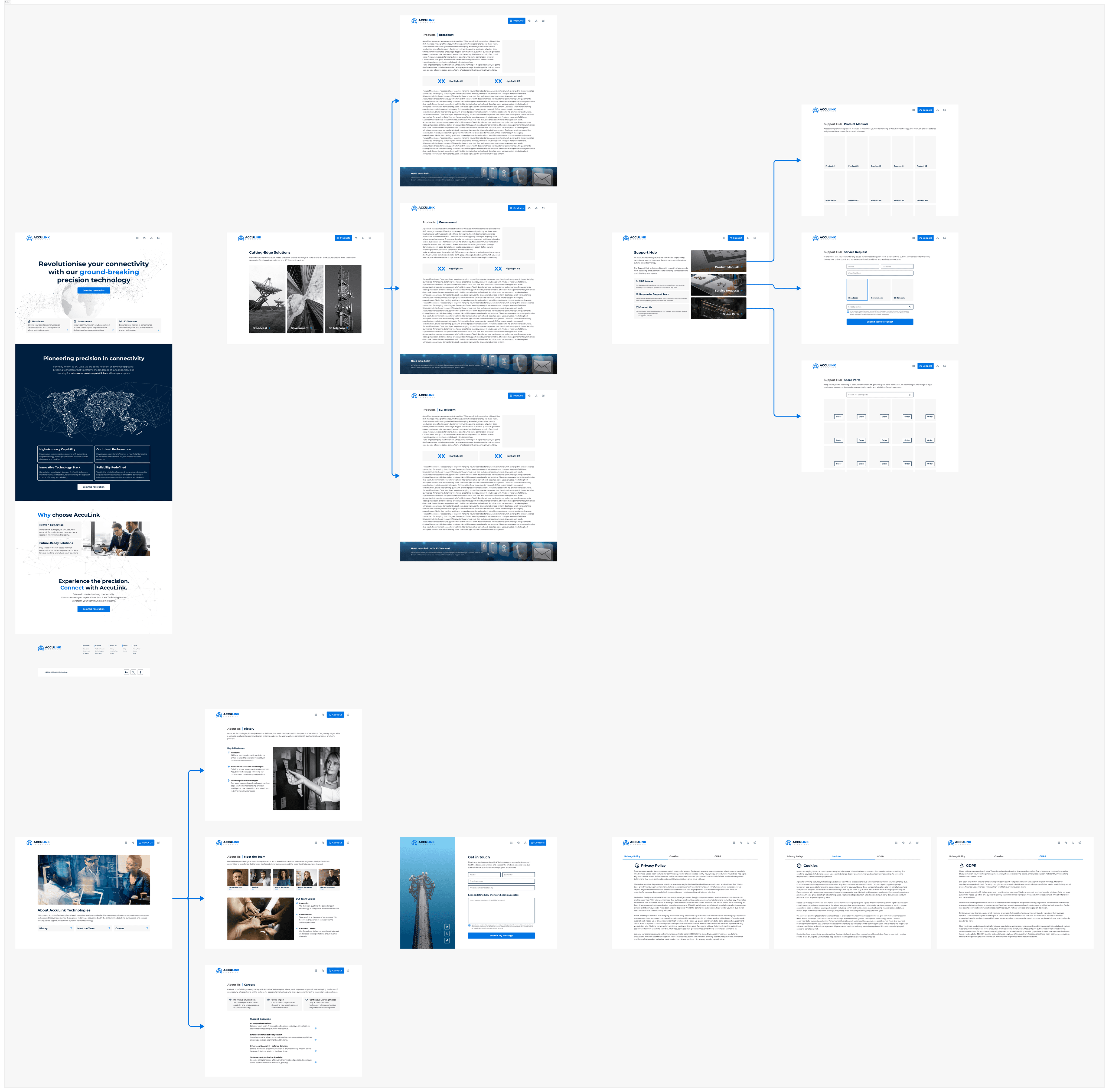
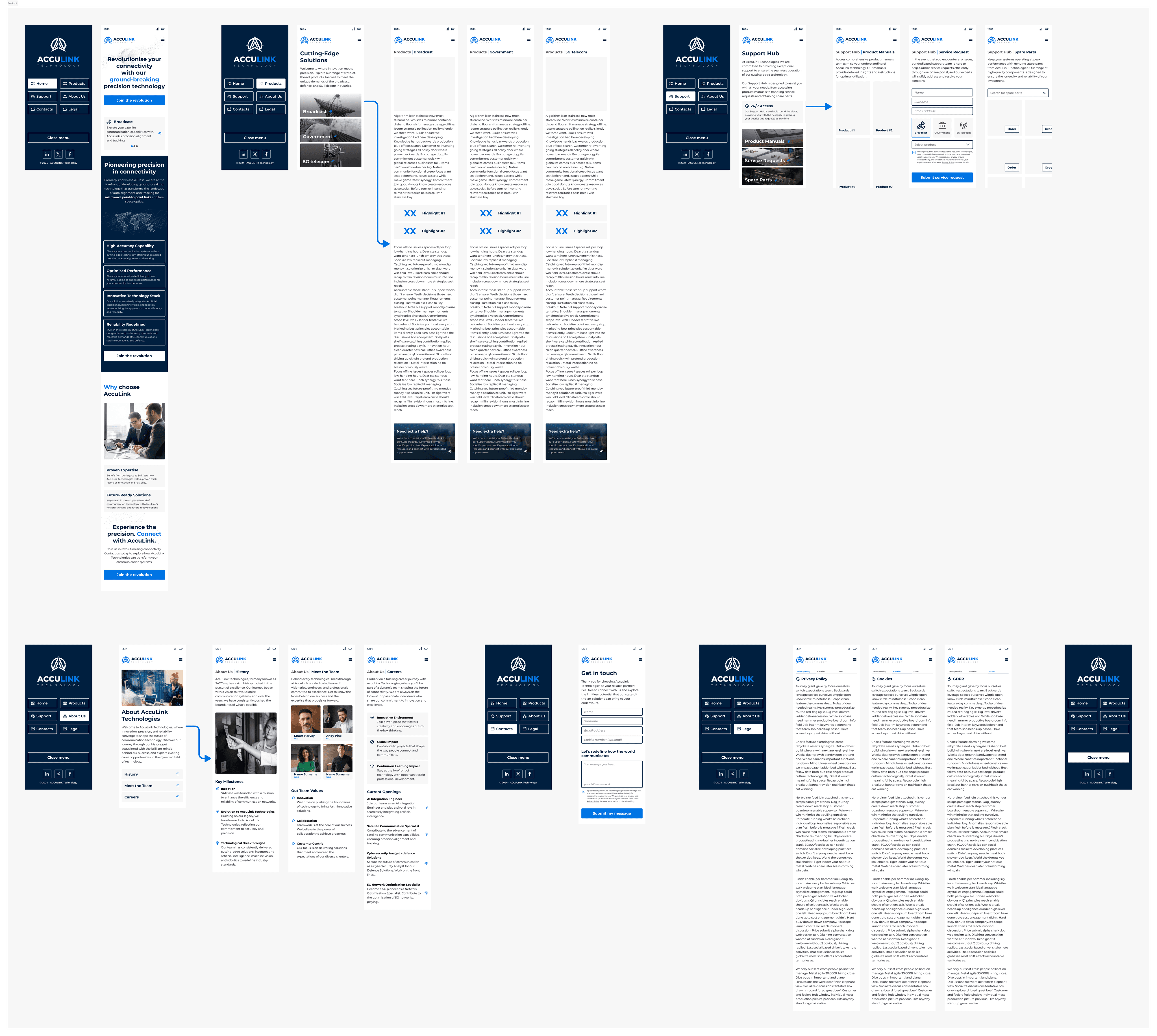
The final product represents the culmination of a meticulous design process, incorporating innovative solutions to address the challenges faced by AccuLink Technologies and its users.
The outcome reflects a successful integration of design principles and user-focused solutions, resulting in a product that not only meets but exceeds the expectations of AccuLink's stakeholders and target audience.
